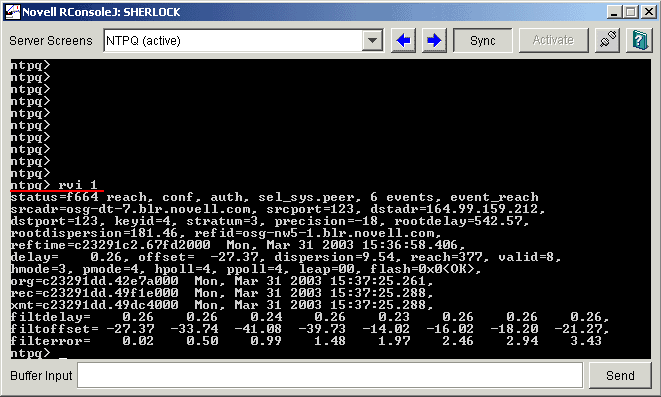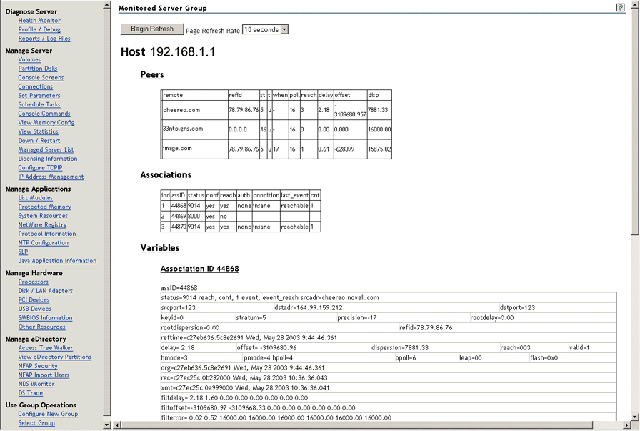7.1 Monitoring Time Synchronization
The quality of time synchronization can be monitored. It is based on the accuracy of the time provided by the time provider to the time consumer.
The time quality variables like offset, jitter, and precision can be measured and logged for online or offline analysis in the text mode for any NTPv3-compliant operating system.
7.1.1 Using NTPQ to Monitor Time Quality
The NTPQ utility can be used to monitor time quality variables consists of the following commands:
Table 7-1 NTPQ commands
For more information about the commands, see Section 6.2, NTPQ.
The following figure displays the output of the NTPQ peers, association, and rv assocID commands.
Figure 7-1 Output of NTPQ Peers, Association, and RV AssocID Commands

The following figure displays the output of the NTPQ rvi index command.
Figure 7-2 Output of the NTPQ RVI Index Command

7.1.2 Using the Health Monitor to Monitor NTP
You can monitor NTP remotely by using Novell® Remote Manager. You can monitor all the servers that are authenticated to the Novell eDirectory™ 8.7.3 or later tree. Select the server you want to monitor. The Peer, Associations, rv, and rvi details are displayed. These details are similar to output that the NTPQ peers, NTPQ associations and NTPQ read variables commands (rv and rvi) give. For more information, see Table 7-1.
Figure 7-3 Monitoring NTP by Using Novell® Remote Manager..
